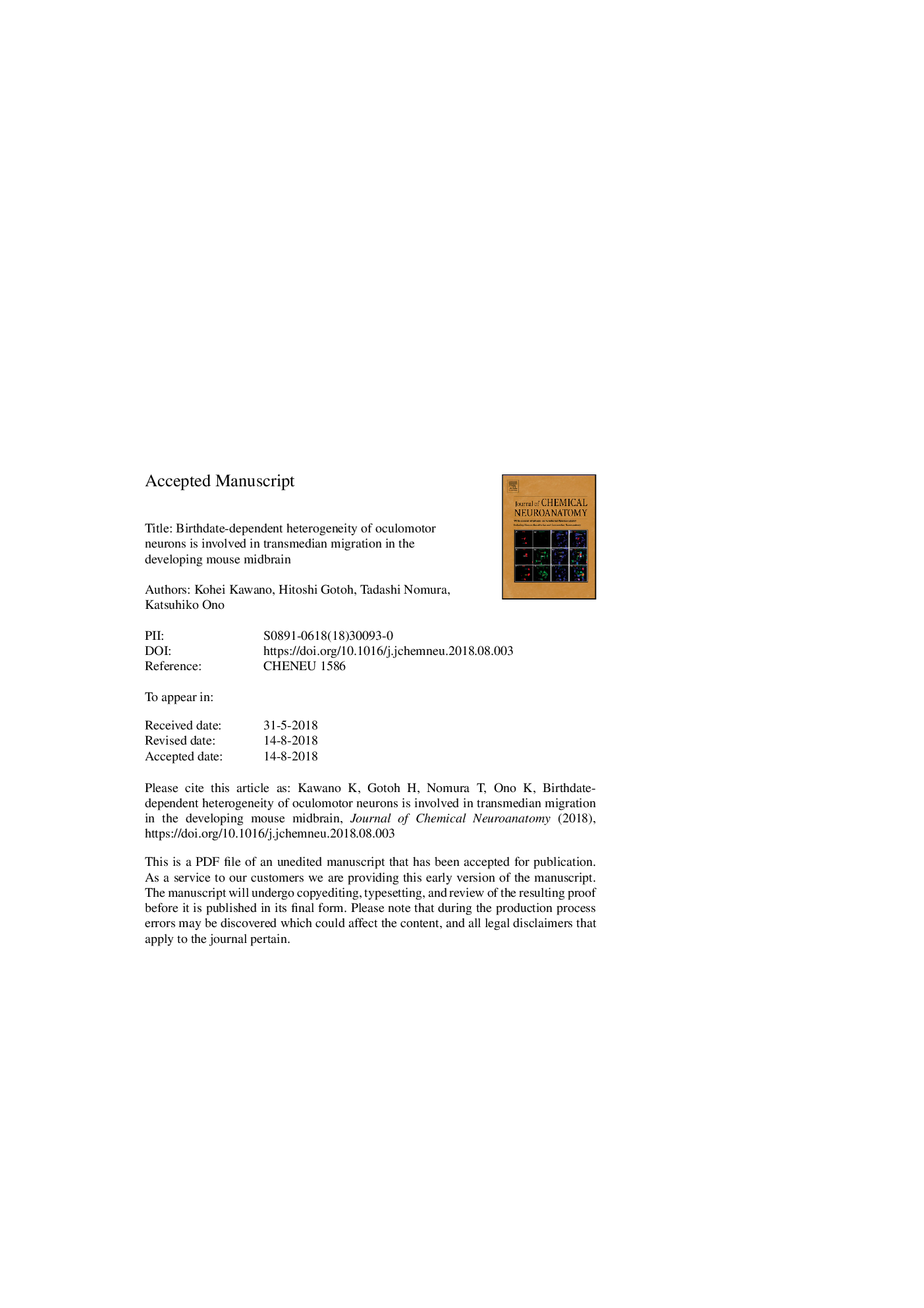| Article ID | Journal | Published Year | Pages | File Type |
|---|---|---|---|---|
| 8943761 | Journal of Chemical Neuroanatomy | 2018 | 28 Pages |
Abstract
During the formation of the oculomotor nucleus (nIII), a subset of cells undergoes transmedian migration, crossing the midline to join the contralateral nucleus. A recent study reported that the onset of transmedian migration of nIII neurons is regulated by Slit/Robo signaling. However, developmental programs that differentiate migratory subpopulations of the nIII remain elusive. Here, we identified cellular and molecular characteristics of nIII neurons that are correlated with their migratory behaviors. Birthdate analysis revealed that contralaterally migrating neurons in the caudal part of the nIII are generated at later stages than uncrossed neurons in the rostral part of the nIII. Furthermore, we found that Slit2 is expressed in the ventral midline of the midbrain and contralaterally migrating neurons. On the other hand, Robo2, a receptor of Sli2, is differentially expressed in subpopulations of rostral and caudal parts of the nIII: uncrossed neurons expressed Robo2 in the developing nIII. These results suggest that spatio-temporal regulation of developmental timings and the molecular signatures of oculomotor neurons are crucial for transmedian migration, which underlies appropriate positioning and stereotyped circuit formation of the nIII in the developing mouse midbrain.
Related Topics
Life Sciences
Biochemistry, Genetics and Molecular Biology
Biochemistry
Authors
Kohei Kawano, Hitoshi Gotoh, Tadashi Nomura, Katsuhiko Ono,
